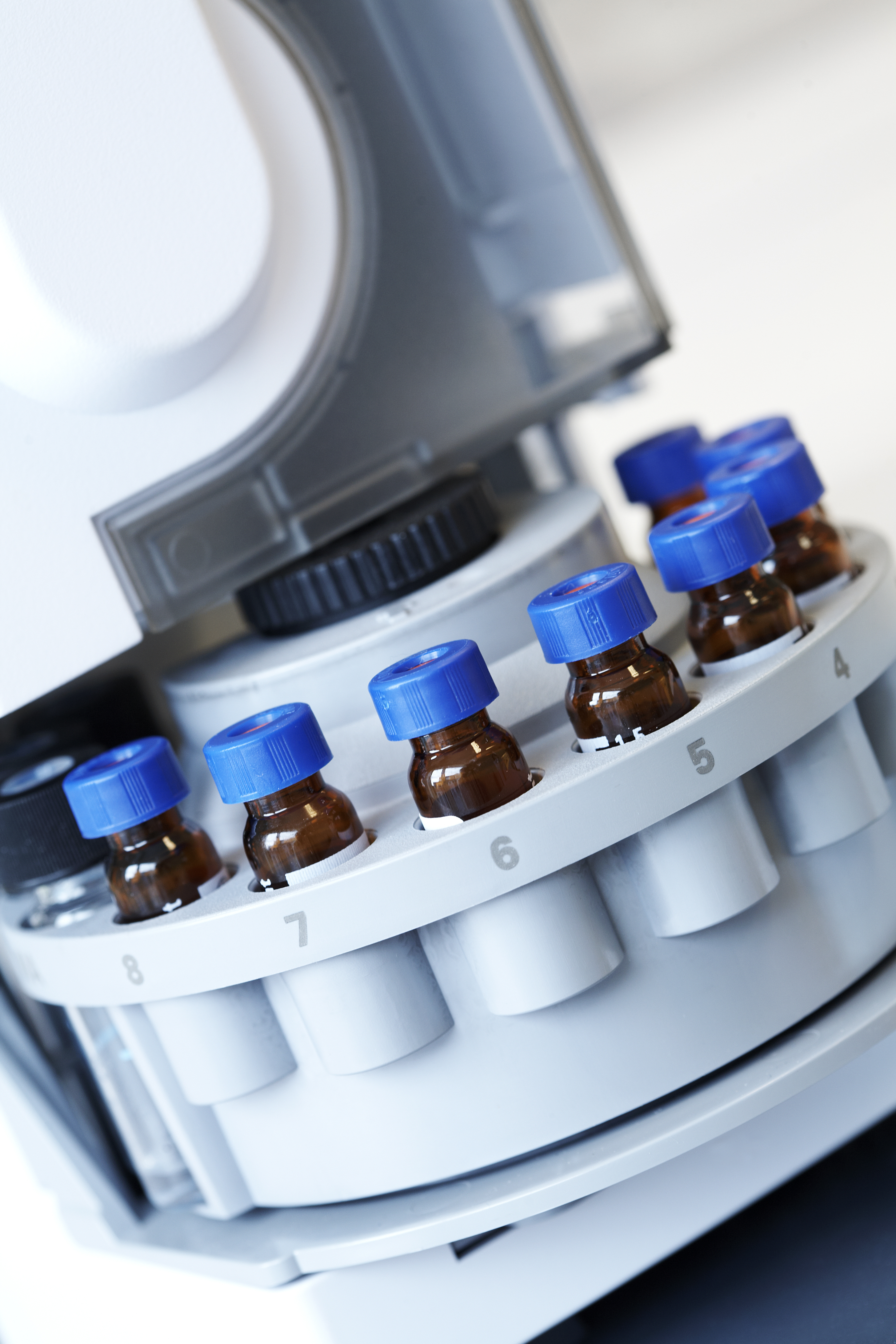
Chemical analysis of a solution (such as water, ethanol or saliva – artificial or real) exposed to dental materials will give information on the identity and amount of the eluted substances. These analyses are usually performed using gas chromatography/mass spectrometry (GC/MS) or liquid chromatography/mass spectrometry (LC/MS). Combining the two techniques allows for the detection of a broad range of substances used in polymer-based materials: from the low molecular weight and volatile mono-methacrylates, to the high molecular weight and non-volatile di- or tri-methacrylates, and also including several additives. The set-up may simulate “mild” or “worst-case” scenarios when changing the different experimental parameters.

The chromatographic techniques will separate the individual components of a solution in time and transport them, through a gas or liquid flow, to the mass spectrometer for detection and quantification. NIOM possesses high-quality analytical instrumentation for both GC/MS and LC/MS. We are currently involved in several research projects where the evaluation of eluting substances, as well as their coordination with biological molecules is investigated. Analytical results from carefully designed experimental set-ups will give the possibility to prove biocompatibility of dental materials.
Background
Polymer-based dental materials are designed to polymerize in situ. However, the conversion of monomers to polymer is never complete, and therefore residual monomers are left unbound and initially trapped in the cured material. These unreacted monomers may leach from the material in vivo, but the collection of biological fluids as well as the detection of monomers therein is problematic.
